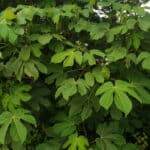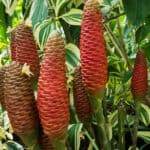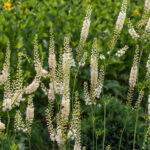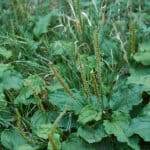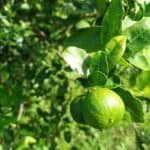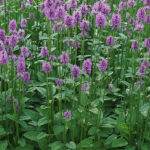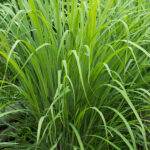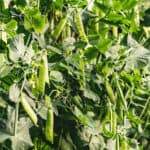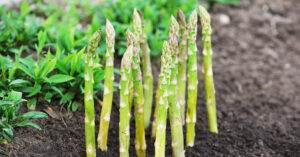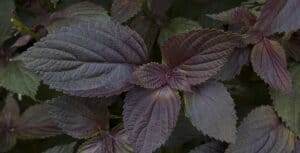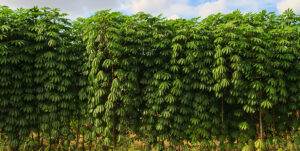Passion Fruit (also called Liliko’i in Hawaii) is an ovoid fruit from the perennial passion flower vine. It ranges from bright yellow to dull purple in external color when ripe, and takes on a vibrant lime green while on the vine. The flower is strikingly purple, white, and yellow (although some variation exists between subspecies) with overlaid filamentous and lobed petals. Its insides resemble a seed-spattered raw egg yolk–a bright orangish-yellow, gelatinous substance with satisfyingly crunchy black seeds.
Passion Fruit can be consumed (and is notably tasty) with as little preparation as cutting the fruit in half and slurping out the insides. If you’re looking for a bit more complexity, however, it can be processed and used in glazes, jams, pastries, drinks, ice cream, shaved ice, etc. It has a perfectly balanced sweet to tart ratio and nearly always contains the perfect amount of edible flesh. Whenever I use passion fruit in a smoothie, I can’t help but steal a taste before emptying the contents into the blender.
Religious Origins of the Passion Vine
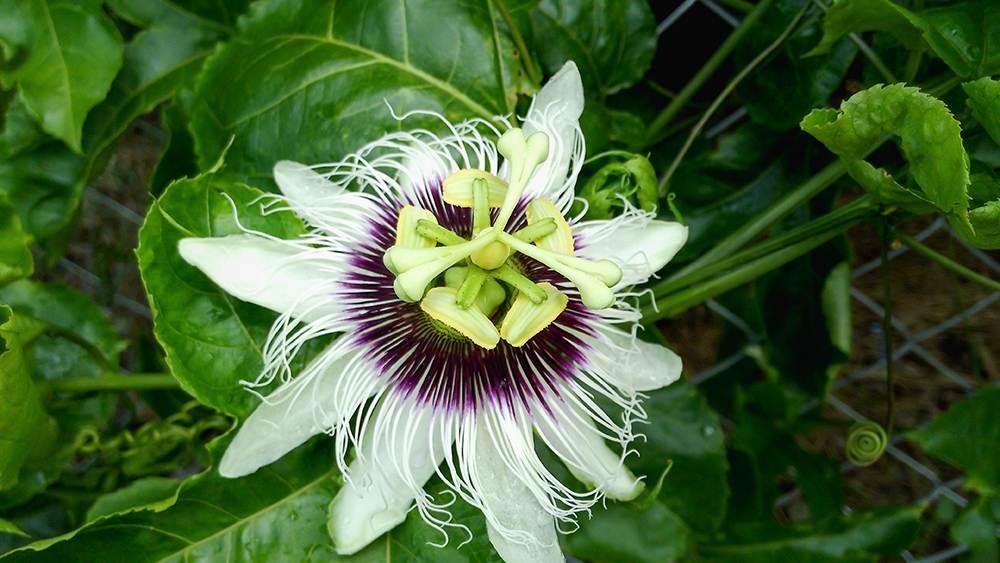
The plant is believed to have been introduced to Hawai’i in the late 1800s or early 1900s from South America or Australia. It thrived in Hawai’i’s tropical climate and quickly flourished in the islands’ more humid, rainforest-y regions. It now grows plentifully in many of the islands’ jungle environments.
When passion fruit was discovered by Catholic missionaries, they believed there was a connection between the fruit and the crucifixion of Jesus Christ. The petals represented Jesus’s disciples, the filamentous petals represented his crown of thorns, the vine’s tendrils represented the whips used to lash him, the anthers represented his wounds, and the stigmas represented the nails used to [fasten] him to the cross. This religious connection explains the origin of the term, “passionfruit.”
Medicinal Uses of Passion Fruit
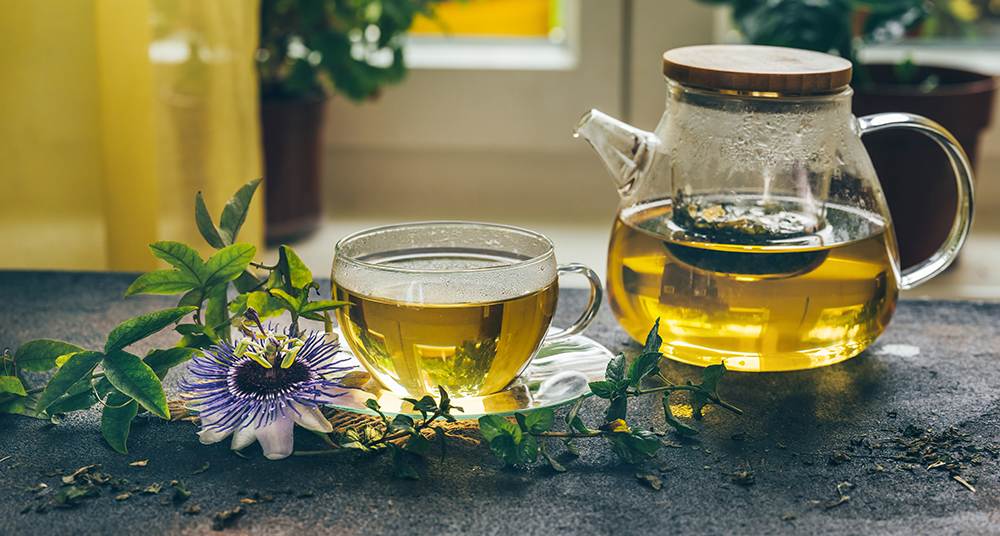
Inconclusive studies have shown that the passion vine leaves and flowers contain alkaloids and other chemicals that may effectively treat anxiety when consumed in large quantities. Studies have shown that when extracted and [consumed], some compounds found in the plant may increase dopamine levels in humans, while others might have a mild sedative effect and can aid with insomnia.
Different plant components have been used to treat additional disorders, including nervous disorders, bronchial conditions, arthritis, asthma, gastrointestinal disorders, and menopausal symptoms. It is important to note that these treatments have not been tested by the FDA, and you should do additional research before utilizing passion fruit to treat any disorders.
Planting Passion Fruit
Passion fruit typically grows from seeds and benefits from pretreatment before planting. Standard pretreatment for passion fruit seeds involves soaking them in lukewarm water (98-110°F) for 24-48 hours immediately before planting them. Additionally, it is recommended to lightly scar the tough seed coats with sandpaper to increase the membrane’s permeability.
After pretreating the seeds, plant them ½-1” deep in moist, nutrient-dense soil mixed with compost and mulch. Passion fruit thrives in tropical environments ranging from 70-85°F. Therefore, it may benefit from bottom-heating at 70-80°F if its environmental temperature is expected to fall below 70°F, as cool soil can remarkably hinder germination. Germination of the seeds should occur between one and six weeks.
Trellising Passion Vines

When found in the wild, passion vines are often found climbing up and around other trees, shrubs, and plants. This can allow the passion vine to find more sunlight, and also provides more potential sites for flowers to grow.
This growth habit can be recreated in the garden using trellises. Cattle panel provides a quick and simple vertical habitat for your passion vines—the panel can be run between t-posts, bamboo posts, or whatever else you have on hand. A simple wood or bamboo structure can also be erected if you don’t have cattle panel on hand.
In any case, your plants will provide more flowers and fruit given the extra room to spread their vines.
Growing and Caring for Passion Vines
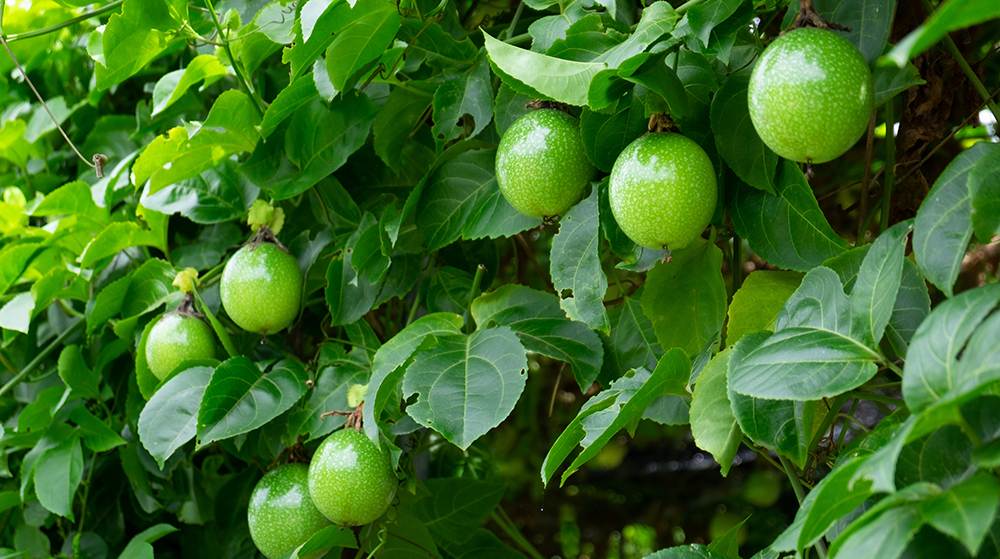
Passion fruit is known to run rampant under optimal conditions. As a vine, it enjoys climbing and twisting and benefits from biotic or abiotic trellising, although it is not required for it to grow. Its rind is hardy and difficult for common pests to penetrate while it remains on the vine. It prefers full sunlight but will flower in shaded areas with significantly less enthusiasm.
It should be watered deeply once a week. Its roots may start to rot if they sit in water, so ensure that its soil is well-drained.
Passion fruit is a hungry plant—spread fertilizer and mulch once in the spring and every four weeks in the fall. Be sure to use a fertilizer that encourages flowering and fruiting, and spread it out! Passion fruit vines develop extensive root systems that are not localized at the base of the vine.
While vines in tropical areas will fruit all year long, those in more temperate areas will provide fruit during the summer and autumn seasons.
How Long Do Passion Flowers Take to Bloom?
In temperate climates, passion flowers will begin to bloom around June and will continue popping off through September. Each individual flower only blooms for one day at a time, showing off a stunning purple display. Once fertilized, the flower takes around two months to produce edible fruit.
How Long Do Passion Vines Live?
Passion vines can live for anywhere from five to ten years before their productivity drastically reduces. You will want to replace your passion vines with new seedlings at that time. The species also perform well as an annual when grown from cuttings in colder climates.
Harvesting Fruit from the Passion Vine
Passion fruit typically falls to the ground when it is ready to be eaten, but will be harvestable just before falling. If you intend to let the fruit drop, keep the area below it clear to facilitate easy harvesting. Passion fruits that are entirely yellow or purple (little to no green) are ripe and can be picked straight from the vine. These are ready to eat immediately after harvesting but will sweeten even more if allowed to sit for a few days. Fret not if wrinkles start to form–crack that bad boy open, and dive in.
Processing and Preserving Passionfruit

Because passion fruit has thick, hardy rinds, they can be slightly difficult to break into without a knife. The most satisfying way I have found to eat them is to pick a freshly fallen passion fruit from the jungle floor and wedge a thumbnail into the rind to produce an opening large enough to break the fruit open; once you get it started, getting the rind to split is fairly manageable. If you are looking for a simpler and perhaps cleaner way to approach the fruit, however, I recommend using a knife to cut it in half. From there, the pulp is readily slurpable (or spoonable). Otherwise, scoop it out into a container for further processing.
Passion fruit possesses a concentrated tart, sweet flavor and can add brightness to any sweet treat, from pastries to shaved ice. The seeds are completely edible, but some find them to be disagreeable. If you want to rid the fruit of its seeds, break up the seed-containing membranes by whisking the pulp or giving it a quick pulse on low speed in a blender. Transfer the pulp to a mesh strainer. You may need to agitate it a bit to ensure maximum seed-free fruit yield.
The pulp can be frozen with or without seeds and used in the future for juices, smoothies, glazes, etc.
Creating a savory passion fruit dish is a bit more challenging, but I have found success with reducing it over low heat to make a flavorful glaze. It was drizzled over marinated tofu and added a lovely, bright flavor to an otherwise warm, spiced dish.
Additionally, I have seen the dried vines used for weaving baskets and other goods. Passion fruit (liliko’i) can do it all!





